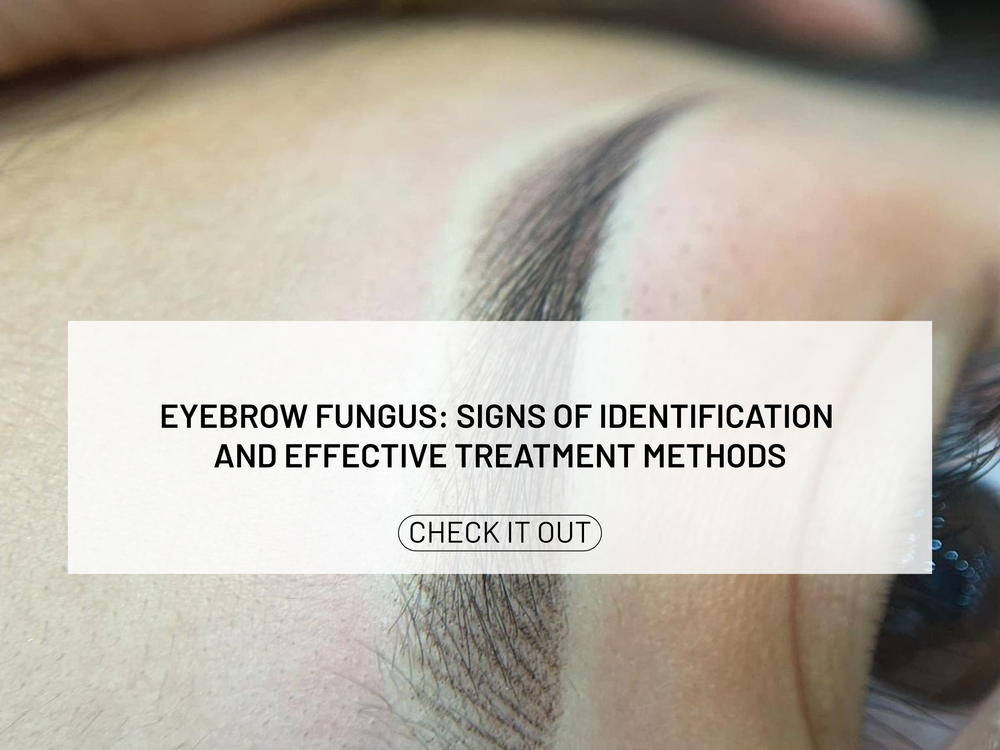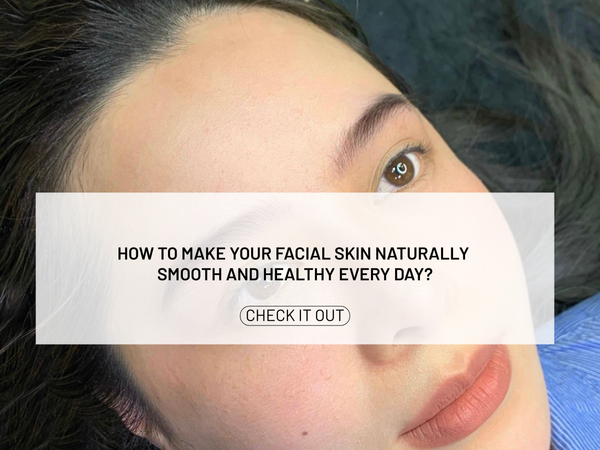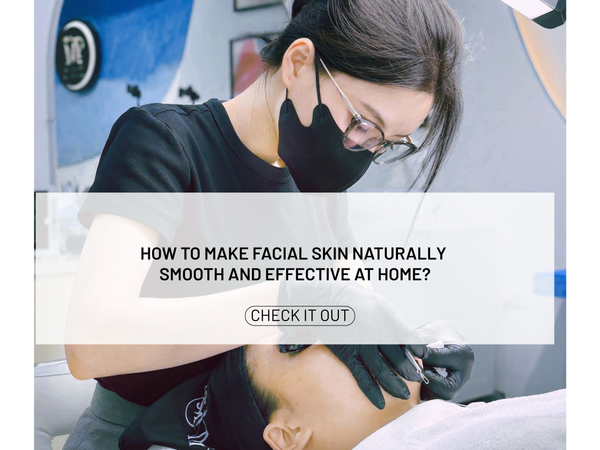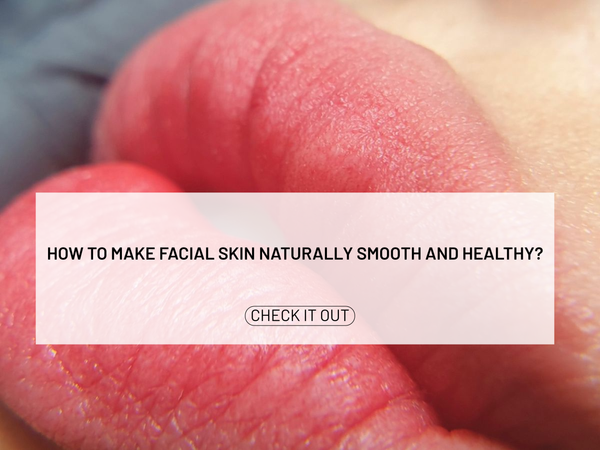Eyebrow fungus: Signs of identification and effective treatment methods
Eyebrow fungus is a fairly common issue that many people face. It not only causes discomfort but also affects the beauty of the face. This article will help you understand the causes, signs, and effective treatments for eyebrow fungus, allowing you to take appropriate preventive measures.
Highlights
- The causes of eyebrow fungus are often related to allergies and unclean tools.
- Signs include itching, redness, and the appearance of blisters.
- Effective treatment includes antifungal ointments and ice packs to reduce swelling.
- Prevention involves maintaining eyebrow hygiene and regular health check-ups.
- Post-treatment eyebrow care is crucial to avoid recurrence.
Causes of Eyebrow Fungus

Tattoo Ink Allergy
One of the main causes of eyebrow fungus is allergy to tattoo ink. When the ink is of poor quality or contains irritating components, the skin may react with redness and itching.
Unsterilized Sculpting Tools
Using unsterilized sculpting tools is also an important cause. If the tools are not properly cleaned, bacteria can enter the skin, causing fungal and inflammatory conditions.
Poor Sculpting Technique
Finally, poor sculpting technique can lead to skin damage. If not performed by a skilled person, the sculpting process can cause small wounds, creating conditions for fungus to thrive.
Signs of Eyebrow Fungus
Itching and Redness
When we experience itching and redness in the eyebrow area, this may be the first sign of eyebrow fungus. This sensation is often accompanied by discomfort and can make us feel restless. To recognize it better, we can pay attention to:
- Skin color: The skin may become redder than usual.
- Sensation: Itching may increase when touched.
- Duration: If this condition lasts more than a few days, we should consider other signs.
Appearance of Blisters
Another sign we need to pay attention to is the appearance of blisters around the eyebrows. These blisters may:
- Break: When the blisters burst, it can lead to inflammation.
- Itch: Blisters are often accompanied by itching.
- Spread: If not treated promptly, blisters can spread to other areas of skin.
Eyebrow Hair Loss
Finally, a clear sign of eyebrow fungus is eyebrow hair loss. We need to pay attention to:
- Amount of eyebrow hair: If we notice more eyebrow hair loss than usual, this may be a warning sign.
- Area of loss: Eyebrow hair may fall out on one or both sides.
- Skin condition: The eyebrow area may become thinner and more vulnerable.
These signs help us recognize eyebrow fungus early and take timely treatment measures.
Effective Treatments for Eyebrow Fungus

Using Antifungal Ointments
We should start by using antifungal ointments as prescribed by a doctor. This medication helps eliminate fungus and prevent the spread of the condition. Remember to apply the ointment regularly and in the correct dosage for the best results.
Ice Packs to Reduce Swelling
Applying ice is a simple yet effective method to reduce swelling and soothe discomfort. We can do this as follows:
- Place ice in a clean cloth.
- Apply to the eyebrow area for about 10-15 minutes.
- Repeat 2-3 times a day to see results.
Supplementing Vitamins and Nutrition
To support the recovery process, we need to supplement vitamins and nutrition for the body. Some foods to add to the diet include:
- Green vegetables and fresh fruits.
- Foods rich in omega-3 such as salmon.
- Nuts and whole grains.
Proper care will help the eyebrows recover quickly and become healthier.
Preventive Measures for Eyebrow Fungus
Proper Eyebrow Hygiene
We need to maintain eyebrow hygiene regularly to remove dirt and bacteria. This helps prevent inflammation. Use warm water or saline solution to wash the eyebrows.
Avoid Using Unverified Cosmetics
Using unverified cosmetics can cause irritation and increase the risk of eyebrow fungus. We should choose products from reputable brands and check the ingredients before use.
Regular Health Check-ups
To ensure the health of the eyebrows, we should have regular health check-ups. This helps detect problems early and take timely action. Pay attention to diet and supplement necessary vitamins for the body, such as Vitamins A, C, and Omega 3 to support eyebrow health.
Notes for Eyebrow Care After Treatment
Avoid Contact with Water
After treatment, we need to avoid contact with water for about 5-7 days. This helps prevent the ink from washing away and reduces the risk of infection.
Avoid Makeup on Treated Skin
We should also avoid makeup on the eyebrow area for at least a week. This helps the skin recover better and prevents irritation.
Use Gentle Moisturizers
To support the recovery process, use gentle moisturizers. This not only helps the skin retain moisture but also soothes discomfort.
Other Important Notes
- Regularly clean the eyebrows with warm water or saline solution as directed by a doctor.
- Apply antifungal ointment as prescribed to reduce the risk of infection.
- Avoid foods that cause swelling such as chicken, seafood, and sticky rice.
When to See a Doctor

Symptoms Not Improving
If we find that the symptoms of eyebrow fungus do not improve after a period of home treatment, this may be a sign that the condition is becoming more serious. We should see a doctor for timely advice and treatment.
Signs of Infection
If there are signs of infection such as pus, swelling, or fever, we need to see a doctor immediately. This is very important to prevent the condition from worsening.
Excessive Eyebrow Hair Loss
If we notice excessive eyebrow hair loss, this may be a warning sign. Please see a doctor to determine the cause and appropriate treatment methods.
If you are wondering when to see a doctor, remember that your health is the most important. Don’t hesitate to seek help when there are unusual signs. Please visit our website for more information and personalized advice!
Conclusion
Eyebrow fungus is an issue that cannot be taken lightly, as it can affect your health and aesthetics. Early recognition of the signs of eyebrow fungus will help you take timely and effective treatment measures. Always pay attention to the condition of your eyebrows and implement proper care measures. If you encounter this condition, do not hesitate to consult a doctor or specialist for advice and treatment. Caring for your eyebrows not only helps you feel more confident but also contributes to protecting the health of your skin.
Frequently Asked Questions
What is eyebrow fungus?
Eyebrow fungus is a fungal infection in the eyebrow area, leading to itching and possible blister formation.
What signs indicate I have eyebrow fungus?
Signs include itching, redness, blister formation, and possible eyebrow hair loss.
How to effectively treat eyebrow fungus?
Antifungal ointments, ice packs to reduce swelling, and vitamin supplementation can be used to support recovery.
Are there ways to prevent eyebrow fungus?
To prevent it, you should maintain proper eyebrow hygiene, avoid using unverified cosmetics, and have regular health check-ups.
What should I keep in mind when caring for my eyebrows after treatment?
Avoid contact with water, do not apply makeup on treated skin, and use gentle moisturizers.
When should I see a doctor about eyebrow fungus?
If symptoms do not improve, signs of infection appear, or there is excessive eyebrow hair loss, you should see a doctor.



